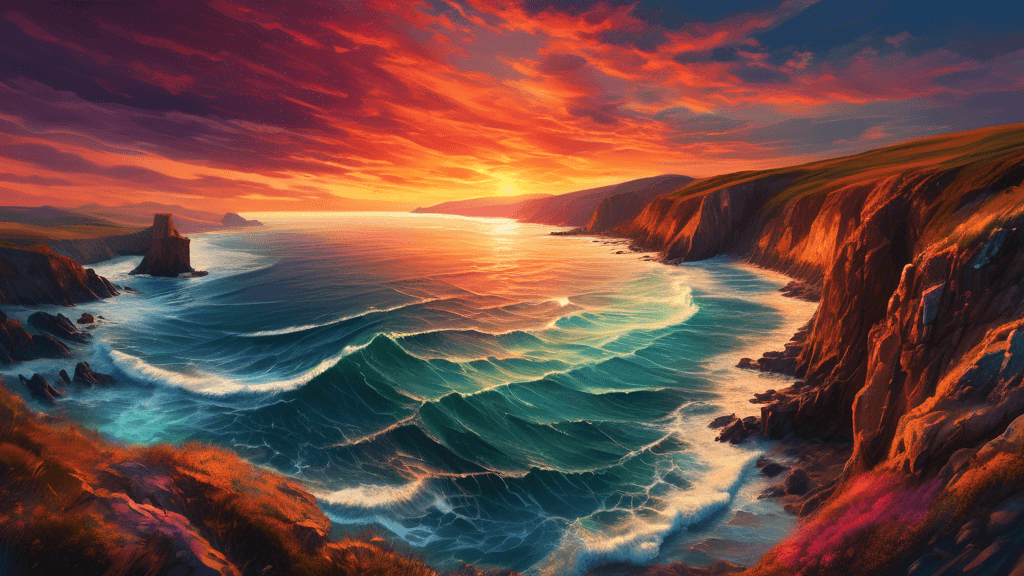
Capturing Coastlines: Wide-Angle Photography on the Peninsula
Share
The Art of Wide-Angle Photography on the Peninsula
Coastlines are nature's poetry—sweeping vistas of water meeting land, often accompanied by dramatic skies and shifting light. But how can you capture this grandeur effectively, especially on the diverse terrains of a peninsula? Enter wide-angle photography, a technique loved by landscape enthusiasts for its ability to encapsulate a vast perspective and convey a sense of depth and scale.
Why Choose Wide-Angle Photography for Coastlines?
Wide-angle photography uses lenses with a shorter focal length, typically less than 35mm, allowing photographers to capture more of the scene in a single frame. This approach is particularly suited to expansive landscapes, such as those found on peninsulas. But why is it so effective?
- Expansive Field of View: Wide-angle lenses capture a wider scope of the landscape, which is essential when you’re surrounded by panoramic seaside views.
- Dramatic Perspectives: These lenses exaggerate the depth and distance, making foreground elements stand out and giving scenes a three-dimensional feel.
- Emphasis on Scale: By capturing vast landscapes and contrasting them with elements like rocks or wildlife, photographers can highlight the grand scale of nature.
Techniques for Mastering Wide-Angle Coastal Photography
To truly leverage the power of wide-angle photography on a peninsula, consider these specialized techniques:
- Composition is Key: With a wider view, it's crucial to compose your shots thoughtfully. Use leading lines—such as the shoreline or a jetty—to guide the viewer’s eye through the image.
- Find a Focal Point: Even a wide scene should have a clear point of interest, be it a rock formation, a lighthouse, or an unusual tree to anchor the viewer's attention.
- Maximize Depth of Field: To ensure everything from the foreground to the background is in sharp focus, use a smaller aperture (high f-number), which increases depth of field.
Noted landscape photographer Ansel Adams once said, A good photograph is knowing where to stand. This is particularly true in wide-angle photography where positioning can dramatically alter the image's impact.
Capturing the Mood of Different Coastal Settings
Peninsulas offer a variety of moods, from the tranquil dawns to the turbulent dusks, each requiring different approaches:
- Golden Hours: Photograph during the early mornings and late afternoons when the light is soft and golden. This light enhances textures and colors, casting long, dramatic shadows.
- Weather Matters: Overcast days can provide diffused light that brings out the vibrancy of the surrounding nature, while stormy skies create dynamic, moody scenes.
- Tides Influence: The state of the tide can alter a coastal scene dramatically. Low tides reveal textures and patterns in the sand, while high tides offer clean, minimalist shots.
The Impact of Environmental Conservation on Peninsula Photography
As we capture the beauty of coastlines, it's crucial to discuss the impact of environmental conservation. Eroded shorelines, littered beaches, and loss of natural habitats are pressing issues. Photographers play a pivotal role in raising awareness through their images, subtly urging viewers towards conservation efforts. As landscape photographer Eliot Porter once remarked, What good is a great photograph if it doesn't advocate for the preservation of beauty?
By choosing sustainable practices—like staying on trails, respecting wildlife habitats, and participating in local clean-up efforts—photographers can help preserve the scenes they aim to immortalize.
Conclusion
Wide-angle photography on a peninsula offers more than just a chance to capture stunning landscapes—it's an opportunity to engage deeply with our environment and encourage its preservation. Each photograph not only showcases the beauty of the coast but also highlights the intricate balance between nature and humans. Now, equipped with the right techniques and an understanding of environmental impact, are you ready to capture the expansive beauty of the coastlines responsibly?
Remember, each shot contributes to the ongoing narrative of our planet's natural heritage and its conservation. Let's make each frame count for more than just a beautiful image; let's make it a call for preservation.





